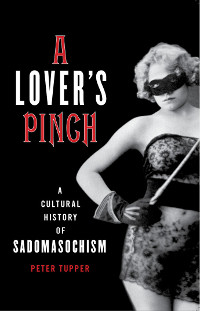Alan Moore’s 25,000 years of Erotic Freedom is a long essay that lays out Moore’s theory that pornography should be integrated into society. It’s only relatively recently that any shame attached to erotic depiction. Before then, there was a beautiful tradition of erotic high art, which Moore says goes back to the Venus of Willendorf.
The problem started with Christianity, or rather the ascetic Christianity of the late Roman empire. It wasn’t decadence that did in the Romans, but becoming a Christian, and therefore an-erotic and xenophobic, society. There were brief flowerings in the Rennaissance and the Englightenment, but thing really went wrong with the Victorians. (This is a pre-Foucault view of the repressive hypothesis.)
Implicitly, it was acceptable to enjoy sexual imagery as long as you accepted also that such acts were sinful and felt suitably ashamed and guilty if you were in any way aroused by their depiction. This established the immediate link between the perusal of pornography and intense self-loathing or embarrassment, which still exists today throughout most of the Western world.
Pg 16
For the purposes of this discussion, there’s the problem of where does BDSM porn, and BDSM in general, fall into Moore’s schema? Is it an expression of the humanizing erotic impulse, or of the corrupting influence of violence and shame?
Even in the golden age of written and graphic pornography, with works like Fanny Hill or Gerda Wegener’s illustrations or Aubrey Beardsley’s drawings or the like, BDSM acts are frequently in there somewhere, especially flagellation, but also a well-turned high-heeled boot or shoe or the like.
In those [Victorian] times, long before the advent of the adult video outlet, city businessmen returning homeward for a wekened with their spouse or partner would call in at some backstreet establishment and pick up a gaslight equivalent: just as theater predates cinema, so too did fully scored dramatic home pornography precede the skin-flick. Pornographic playlets could be purchased, ranging from two-person dramas through to full ensemble pieces if the neighbors were agreeable. These publications came with sheet music, so that if one of the participants were musically inclined then he or she could sit at the piano and provide a vigorous accompaniment to whatever activity was taking place upon the hearth rug or the horsehair sofa. (Yes, I know it sounds ridiculous, but was told that by Malcolm McLaren, and if you can’t rust Malcolm McLaren then whom can you trust?)
Pg. 18
This isn’t really a historical book or even an essay. It’s more like have a pub conversation with Moore where he’s spinning out some off-the-cuff theories. You don’t bring a bibliography to a pub conversation.
Just to recap, then: Sexually progressive cultures gave us mathematics, literature, philosophy, civilization, and the rest, while sexually restrictive cultures gave us the Dark Ages and the Holocaust. Not that I’m trying to load my argument, of course.
Pg. 39
As a general rule, I think this holds up: the better the status of women in a society, the less restriction there is on sexual expression. But I wouldn’t stake my reputation on that. I’d like to see some kind of study comparing the two factors: an index of pay equity, reproductive rights, etc, versus restrictions on depictions of sexuality, sex work laws, etc. But it would involve so many subjective issues that I don’t think it would be a solid piece of research.
So, what is the relationship between a society’s sexual expressiveness and its progressiveness on a social scale?
I think that this is a much thornier and complex issue than some people would like to make it. Anti-porn feminism wanted to create the equation of “Pornography is the theory, rape is the practice.” Sex-positive types say there’s no connection at all, that pornography actually functions as a release valve for desires that would otherwise fester into violence.
It’s said that liberal democracies are good for market economies, but market economies aren’t necessarily good for liberal democracies. I see this as analogy to the relationship between sexual expression and progressiveness.
I tend to agree with Moore’s hypothesis, and there’s a bit of a manifesto that I can get behind: that there should be ambition on the part of porn’s creators, and porn should not be consumed in shameful secrecy. These are the ideas that informed Moore’s Lost Girls trilogy, which aimed to be part of an art-porn historical tradition, to be a coffee-table-book display artifact, to invest literary and artistic skill into porn and stimulate discussion.
Still, as I historian I want a more rigorous study of the history of porn, and one that’s more nuanced too.




